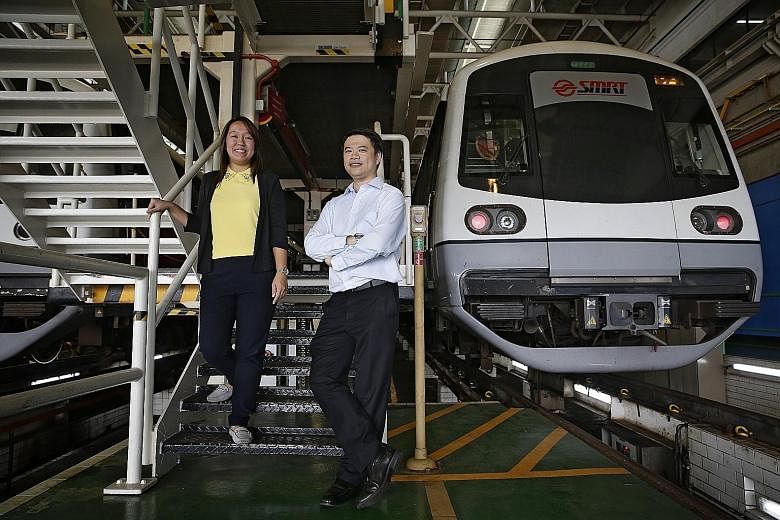Singapore is short of almost 1,000 rail engineers, as it strives to improve service standards while rapidly expanding the rail network.
Operators SMRT and SBS Transit, together with the Land Transport Authority (LTA), have been stepping up efforts to make the job more attractive - including higher salaries, better training and more opportunities for promotion.
Still, many Singaporeans are put off from joining the profession, said the operators.
The manpower shortage has had some impact on operations, they acknowledged. Rail reliability has been a grouse since December 2011, when two breakdowns on the North-South Line left tens of thousands of commuters stranded.
More recently, a two-hour breakdown on the North-South and East-West lines during the evening peak period in July last year affected more than 200,000 commuters.
This is even as the MRT network here is slated to double by 2030, with 360km of tracks criss-crossing the island. There is also the upcoming High Speed Rail (HSR) project linking Singapore to Kuala Lumpur, expected to be ready by 2026.
"Globally there's a railway engineer crunch," said SMRT human resources vice-president Madelene Lee, adding though that SMRT has managed to double its number of rail engineers since 2011 to more than 400, of whom 95 per cent are Singaporeans and permanent residents.
But it still needs about 700 more over the next three years for maintenance of its operations, which currently include the North-South, East-West and Circle MRT lines, in addition to the Bukit Panjang LRT.
Its competitor SBS Transit hopes to hire 100 more engineers and technicians over the next year to work on its North East and Downtown MRT lines, as well as the Sengkang and Punggol LRT lines.
The LTA website listed more than 80 rail engineering-related positions, with a quarter of those positions related to the HSR project.
Earlier this year, SMRT announced a slew of initiatives aimed at improving services and increasing staff strength. They include a pay rise of at least 5 per cent for rail maintenance line managers, and linking a greater percentage of bonuses to how smoothly trains run.
LTA human resource director Goh Hui Boon also said that the authority ensured "attractive and competitive" remuneration for its rail engineers.
However, many factors still deter job seekers from joining the profession. As maintenance work on train lines here is conducted only after the lines end operations for the day, this means late hours for engineers.
LTA deputy project manager Chan Jie Yee, 26, said she does night work - from midnight to 5am - two or three times a week.

SMRT's Ms Lee said: "What they do is very onerous." But she added that it wasn't all about getting one's hands dirty.
Said Ms Chan: "On some days, I could be in my hard hat, safety boots and vest attending to issues onsite while on other days, I could be deskbound responding to e-mail or in a meeting to attend to issues."
Higher pay elsewhere also lures the engineers away.
SMRT said it pays more than the median salary for engineers, but declined to give figures.
The median gross salary for engineering graduates from universities here ranges between $3,200 and $3,700 monthly. Earlier this year, it was announced that engineering graduates joining the public sector can expect salaries of at least $3,800.
This, however, pales in comparison to more lucrative sectors such as banking, to which many engineers often switch midway through their careers. There, they can expect to be paid at least 30 per cent more.
The operators and LTA will simply have to offer more, said Mr David Leong, managing director of recruitment firm PeopleWorldwide Consulting.
"It will finally boil down to the dollars and cents issue, the bread and butter part - Is it worth it to be in rail engineering?"
Engineers who have stayed on say that the rewards of the job go beyond the monetary aspect.
Ms Chan said she is able to see the fruits of her labour whenever she takes the train.
Mr Keith Lim, 45, said he decided to join SMRT as a rail engineer 16 years ago because it was similar to his previous job in manufacturing. But after working for some time, he has developed a fervour for the job.
"Compared to when I started, I feel more passionate about my work now," said the signals and communications deputy principal fellow.
"It's about pride in the rail industry," he added.
Correction Note: This story has been edited to correct the name of LTA human resource director Goh Hui Boon.



